Editor’s note: Our writer Rita’s journey from China to the U.S. and back again was planned months before the coronavirus pandemic descended on the world. That descent ended up turning a simple trip home into a kind of epic journey. The changes in her location — which we reference, but do not dwell on, to help anchor the story — gave her a unique perspective on the changing landscape — and outlook — of the world as COVID-19 infections spread. We’re publishing a diary of that period here in part to relay some of that first-person perspective to you, our readers. It goes without saying, but the tech angles run throughout, as they are running throughout all of our lives right now (whether or not we “work” in tech). Apps connect us more than ever at a time when we can’t physically be together, and they are now a critical lever in getting things done. Governments scramble to use tech to track what’s happening — although surprisingly even what we think of as the most totalitarian efforts fall short in a crisis. And at the end of the day, the internet is where all our information is coming from. (IL)
Departing
On the night of March 13, before my flight from Philadelphia back to China, my Airbnb host stopped by my room to say goodbye. I was squeezing a stack of masks and a few bottles of hand sanitizer into my suitcase. They were the remaining stock of coronavirus protective items that I panic-bought in early February as soon as I landed in the U.S. As China’s production picked up speed, I gave away most of my supplies — which I had planned to bring back to my family in China — to friends and relatives in the U.S.
I had also asked my host, a slender, high-spirited botanist in her early fifties, whether she needed any supplies when I arrived at her house in early March. She gave a relaxed smile and said she wasn’t worried. There had barely been any cases in Philly, so there was no need. Plus, she had never worn a mask.
“People think you’re sick if you wear one,” she refused politely. “Why do people in Asia wear them?”
I explained that there’s a big debate on whether masks were necessary for the public. The consensus was that they were effective at preventing the transmission of COVID-19. Health officials in the West had for long recommended them only for patients or someone in contact with those who were sick, though the U.S. has recently moved to suggest mask-wearing for everyone in public.
In Asia, however, mask-wearing was a cultural norm even before the COVID-19 outbreak. Given the disease’s incubation period could be as long as 27 days, which meant many people could be unwitting carriers, wearing masks became an act of solidarity to protect others. Chinese cities had early on mandated mask-wearing in public. For me, they worked both as a placebo and a reminder not to touch my face.
Within a week’s time, the disease had advanced rapidly across the U.S., adding dozens of new cases in Philadelphia. All large events were suspended, and my host suffered from a handful of canceled stays.
I decided to ask her again whether she wanted any protective products. “Yes, that’d be great. I don’t have any sanitizers with me. No masks, either.” Her eyes lit up this time. “But how do you wear one?”
I handed her the items and realized that I was about to flee coronavirus for the second time. When I planned my visit to the U.S. a few months back, I had not the faintest idea it would spiral into two great escapes: first leaving China where the disease just began to spread, and later leaving the U.S., where a similar crisis was taking form.
Weeks 1-2: Fears in parallel worlds
I was getting restless when I left for the U.S. some 50 days ago. Objectively speaking, my chances of contracting COVID-19 were slim. I was previously in lightly-hit cities like Taipei (which was an early mover in putting effective controls in place). And 99% of the passengers on my flight departing Hong Kong had masks on. But the sum of uncertain events triggered by the epidemic — from abrupt changes in border controls to canceled flights without notice — elevated my anxiety.
Things felt uncannily normal in Texas when I arrived. It was three weeks before the U.S. reported its first community transmission in late February. None of the screening I anticipated was present at immigration: no temperature checks or even questioning if I had been in Wuhan, the Chinese city where the first coronavirus case appeared. I felt relieved and immediately chucked the mask I had worn on the plane. “It’s safe here,” I thought to myself, seeking solace in the sight of the bare-faced crowd, even though I knew my decision was largely prompted by the prejudice against masks in this part of the world.
My relaxation was short-lived. In fact, I would live the next eight weeks swinging between reason and paranoia.
The relatives and friends with whom I had planned to stay could no longer host me. Their employers, both of Asian descent, had introduced a new 14-day self-quarantine rule on staff who came into contact with visitors from China, even though Texas had no such regulation.
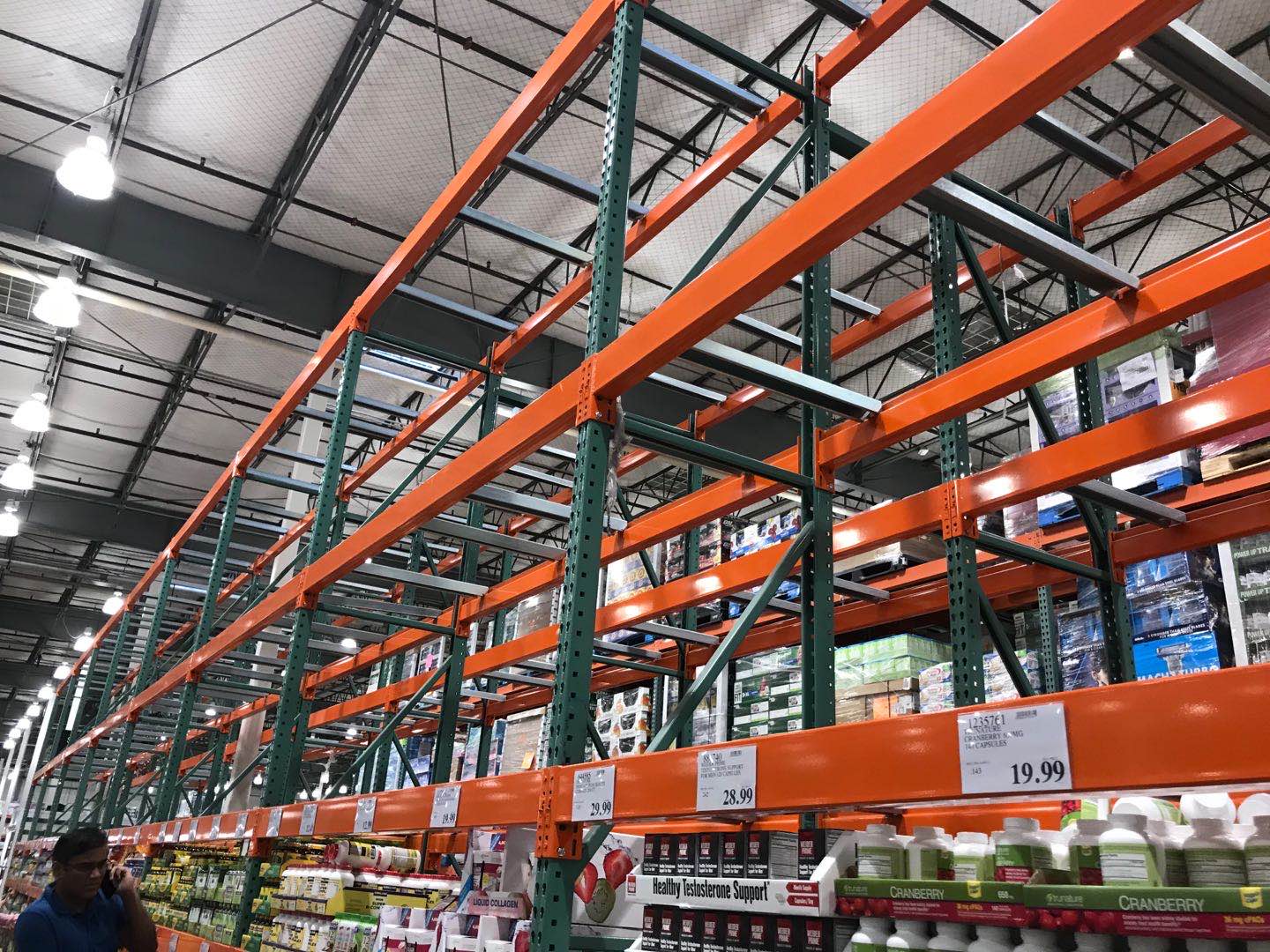
Technically, I could roam free, but fears among the local Chinese community were too visible. The digital tools that kept the diaspora emotionally close to home also distanced them from their physical reality abroad. Consuming a flood of fearmongering posts on WeChat, many Chinese expatriates began hoarding household products long before the U.S. saw an outbreak. Chinatowns became ghost towns. My mother was shocked to learn only Asians were wearing masks and messaged me daily saying I should wear one and avoid crowds.
I followed only the latter advice — avoiding crowds — and voluntarily opted for 14-day social distancing, not because I was scared of getting infected but because I was paranoid about passing it onto others asymptomatically. My compulsive information seeking in hopes of better understanding the epidemic only reinforced my angst. No silence I had dealt with felt as unbearable as the isolation amid the immense uncertainties that coronavirus brought to all of humanity.
Weeks 2-5: Coming to terms
When I finally allowed myself to resume socializing two weeks later, I would, out of courtesy, disclose to people that I had recently been in China. The reactions I received were a mixed bag.
Most of my American friends expressed sympathy for China’s situation and were pleased I was in a safer place. A local dentist refused to see me until 21 days later — then the longest time for a patient to display COVID-19 symptoms — because he lived with someone who was frail. Some Chinese friends living in the U.S. jokingly congratulated me on my escape from the plague, which wasn’t my intention, but I admitted I was lucky. A fifty-something Chinese acquaintance avoided shaking my hand and gingerly asked how long I had been in the U.S.
I tried not to be bothered by people’s hint of mistrust. After all, their response was driven by the human instinct to survive. Trust had also eroded with the spread of the epidemic in China, where neighbors avoided conversations and a person’s sneeze in the elevator would make others cringe. Though understandable, these small shifts in behavior could take a toll on social interaction and people’s mental health in the long run.
By then, I knew I probably had a clean bill of health. It helped that Texas was run on wheels and I could easily practice social distancing walking on empty, tree-lined streets. As my mind restored to peace, and I moved to Philadelphia for the second part of my U.S. trip, I began to devour the expanding trove of Chinese-language writings on the disease; they were perhaps one silver lining behind the dark virus cloud.
Trapped indoors, Chinese people were forced to contemplate difficult questions — though sometimes leading to unintended consequences, like a rise in divorce cases. The unusual level of civic engagement and discussion sparked by the crisis provided some consolation. Stories of ordinary people fighting illness were vividly told by institutional and citizen journalists. The death of whistleblower Li Wenliang set off an unprecedented amount of anger on the internet. Another enthralling moment came when internet users rushed to preserve a censored interview using coded text.
The unusual, collective outcry against Chinese authorities soon gave way to a fragmented digital world. As China’s heavy-handed lockdown began to bear meaningful results, online users rushed to trumpet the country’s contingency plan. Others submerged in the more mindless activities of mobile gaming and video streaming to pass time. Meanwhile, schools and businesses moved to resume digitally with IT support touted by private tech firms.
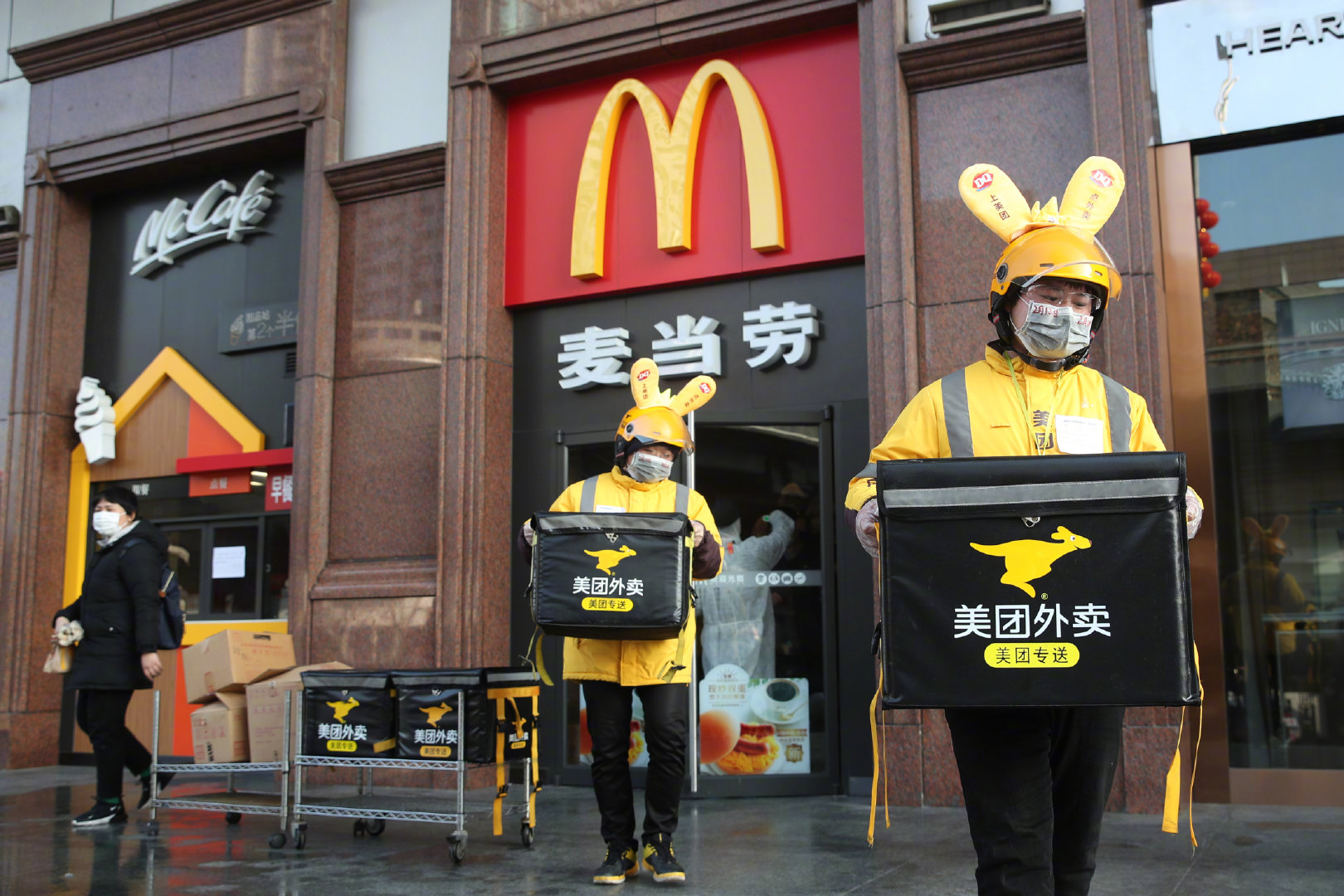
The offline world in China was also inching back to normalcy. Physical shops were allowed to reopen and restrictions on movement were being eased nationwide. People increasingly ventured out of their homes, taking masks off to sneak sips of fresh air when guards were out of sight.
For others, the daily routine hadn’t changed much, though life had become more precarious. While it was easy for high-earning professionals to attend virtual meetings and celebrate the remote working boom, those working in services, manufacturing and logistics had not been able to stay home but worked round the clock to sustain society’s lifeblood. They were also unlikely to have paid leave and many lacked employer-provided health insurance. As it turned out, this is just one manifestation of disparity exposed by the health crisis.
Week 6: The price of seeking safety
I knew China was on the horizon as soon as I arrived at my flight’s departure gate. The crowd was uniformly wearing some kind of a face protector. I hadn’t put one on yet. I had been adjusted to a maskless environment for weeks by then and it didn’t seem necessary to wear one during the layover in Chicago, where I cautiously kept a distance from others. There were barely any masked travelers at the airport other than the passengers en route to Hong Kong and Mainland China.
I put on one nonetheless in the spirit of solidarity. But others’ ammunition of protective equipment immediately put me to shame. Many donned surgical gloves, some in lab goggles and even plastic rain ponchos, disinfecting any surface their bodies touched. Drinking water with my mask dangling off one ear now felt transgressive, not to mention I broke a taboo by having in-flight meals.
More than impressed by people’s precautions, I was intrigued by the discrepancy in their access to masks. Paying exorbitant prices could secure the robust but scant N95 respirators. Most had the less expensive surgical masks, but even those became hard to find without connections to a supplier. A few wore the dubious varieties like the sponge mask, the washable cartoon cloth mask (I wore a Hello Kitty one to my elementary school during the 2002 SARS epidemic) and even DIY ones like a fashionable shawl.
Flights also became a microcosm of the disparity in protection: first-class cabin passengers were seated at a supposedly safe distance from one another, while the elbow-to-elbow economy travelers fretted the risk of flying amid an outbreak would outweigh the benefit of returning to what they perceived as a safer country.
Even getting a seat on the plane was a privilege. While airlines were suffering overall due to travel bans, demand could surge temporarily around major policy shifts. Following the WHO’s declaration that COVID-19 was a global pandemic, schools around the world moved classes online and shut dorms, prompting international students to go home. Flight tickets skyrocketed. Those who wanted to go home but couldn’t afford the price were stranded.
Week 7: Battling uncertainties
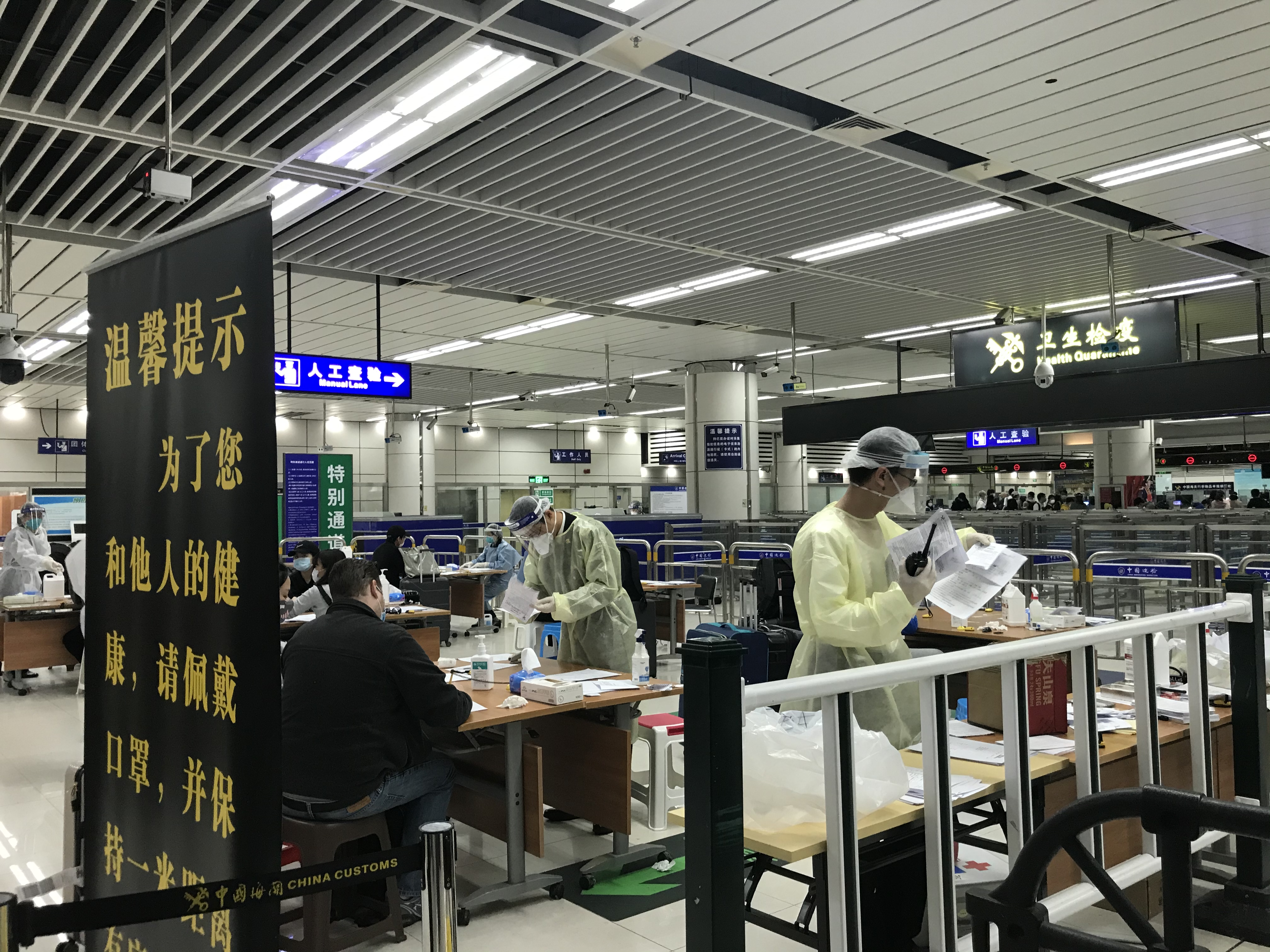
While our plane was traveling across the globe, my home city of Shenzhen announced expanded compulsory quarantine for arrivals from four to eight countries — adding the U.S. to the list — in an effort to contain imported cases as the epicenter of COVID-19 shifted overseas.
At 8 PM, the Shenzhen customs checkpoint resembled a hospital waiting room with a barely moving queue a few hundred meters long. Screenings were underway to detect coronavirus cases. The updated policy had not been officially announced, and many travelers were still expecting their family on the other side of the border. Impatience and confusion filled a hall that was lit by nauseating fluorescent lights. Will everyone be tested for the virus at the border or later at a quarantine base? Will foreigners receive the test for free? Will people have to pay for the quarantine?
Even the immigration staffers had few details. China’s containment measures were in flux just like the spread of the virus. The flood of inbound returnees was quickly squeezing the country’s medical resources and filling budget hotels repurposed as quarantine facilities.
At 1 AM, I was finally called upon for a temperature check. I filled out a dozen forms asking similar questions about my travel history and health condition, each going to a different government agency. I wondered why, with China’s alleged technological prowess, this grunt work hadn’t been digitized or streamlined. Are resources for public monitoring going into other areas the government prioritizes?
I felt exhausted, but not more than the customs officer examining me, who had been toiling away for more than 12 hours. Despite having full-body protection, he was unaware his mask had slid beneath his nose.
“When do you get to go home?” I asked. “Who knows? There are so many of you coming back. China can’t afford another outbreak. We have no choice but to work,” he said nonchalantly.
Once my paperwork was sorted, I proceeded to cross the border. China immediately welcomed me with a text message, reminding me to register with the public security bureau as location data from my telecoms carrier showed I had recently been in “epidemic-stricken” America. The virus outbreak was giving Beijing more reason to monitor individuals. The question was why, given the government already commanded abundant citizen data, it seemed to have struggled in their early efforts to track people traveling from Wuhan.
https://twitter.com/ritacyliao/status/1227483969043738625
I was placed in a group of 20 travelers, most of whom were overseas Chinese students, to wait for the shuttle that would take us to the quarantine hotel. We bonded quickly by grumbling about the surreal eight-hour border crossing, but no one was actually angry. Instead, there was an outpouring of genuine gratitude for front-line health and immigration workers.
Famished, one of us volunteered to put everyone in a WeChat group so we could order food delivery together. The WeChat group, aptly named “3.14 Quarantine”, turned out to be useful for trading information and supporting each other through the erratic quarantine period. A street-sweeping truck was humming at a distance. The clock struck 4 AM as our bus pulled up in front of the hotel.
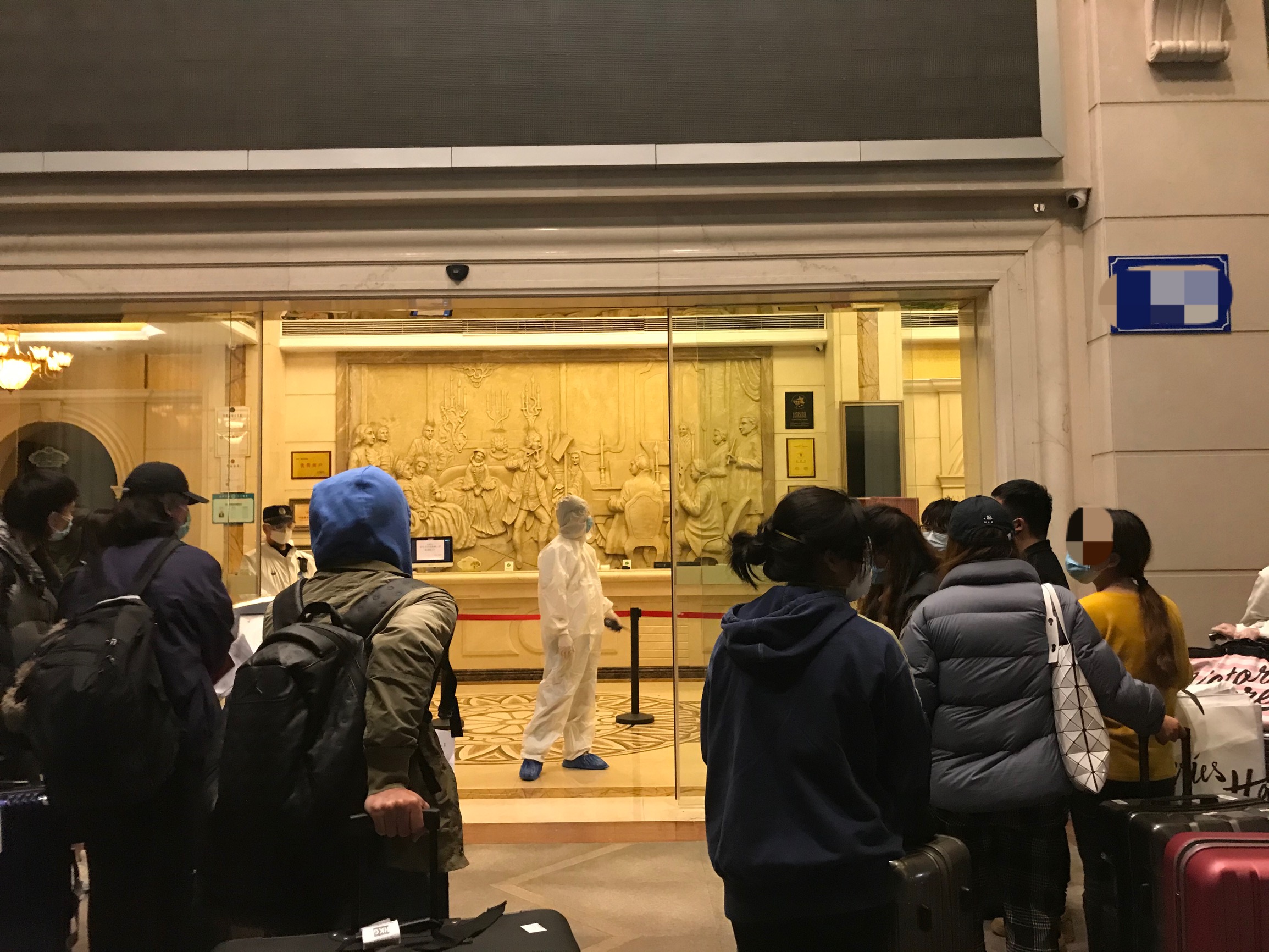
Week 8: Embracing chaos
Adjusting to the Chinese time zone became virtually impossible as my day confined to the hotel room was punctuated by a string of sporadic events: temperature checks, meal deliveries, nucleic acid tests, phone calls from various government agencies and transfers to new quarantine locations. One night, we were given half an hour to pack up and get on a bus that took us to the edge of Shenzhen. There we underwent a virus-detecting test, only to be transported back eight hours later, at 3 a.m., to another hotel in the same area we had previously stayed.
My quarantine peers were growing impatient with the unpredictable circumstances and began calling any relevant phone number they could find. As we shared in our WeChat group snippets of information we had collected from hotel staff, local officials, relatives and friends, something became clear: The quarantine system was the result of mass mobilization and complex coordination between public and private organizations, ranging from health workers and the Communist Party’s base-level administrative organ (called neighborhood committees) through to government-subsidized hotels and residential complexes.
When policymakers imposed frequent changes, the players implementing them on the ground often ended up scrambling, leading to miscommunication and such counterproductive measures as shuffling us around in crowded buses. They were briefed only on their part of the job rather than the entire process, which remained opaque, so getting close to policymaking power was critical. Calling a relative who worked in the disease control department was probably more useful than asking a hotel staffer. Personal ties seemed to matter even more in China when one sought control in times of uncertainty.
Some of us with insider information learned how to game the system. Before being dispatched to quarantine bases, we had to self-report our household address, for each district government was in charge of quarantining its own returning residents. The more deep-pocketed district normally provided higher-standard lodging and food, a piece of information precious to desperate individuals fighting for marginally better treatment.
I fall into the camp of people embracing chaos, as trying to stay informed and in control over continually updated guidance from above could quickly make me cross the line into anxiety.
There is already an abundance of self-care tips floating around, but having outrun the coronavirus twice, I could at least attest to their efficacy: Pare down your information sources to one or two trustworthy outlets; stay physically active; call people; keep a sense of humor; take deep breaths and perhaps spare some time for a mindfulness talk. It’s better to reserve grit for any long-term changes caused by COVID-19, which are looking increasingly likely.
On the afternoon of March 29, staff from my neighborhood committee came knocking on my door. Clad in blue hazmat suits, they gave me a final temperature check and granted me a piece of paper declaring my completion of the quarantine. I immediately put on a mask and went downstairs.
Things seemed intact at first glance, but a closer look revealed subtle but long-lasting changes since I had left two months prior.
Everyone was wearing a mask — even drivers alone in their cars. Premises had temperature checks and sanitizers at the entrances. Many small restaurants looked deserted; the ones back in business had more food deliverymen waiting about than people dining in. War-like propaganda posters dotted the street, reminding people that the battle against the plague wasn’t over. The world would never be quite the same.
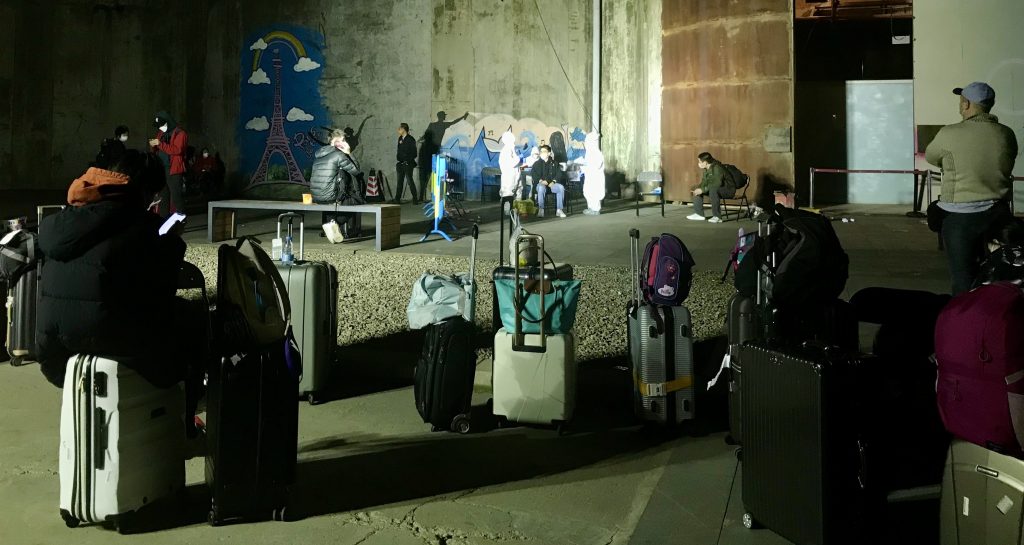































Comment